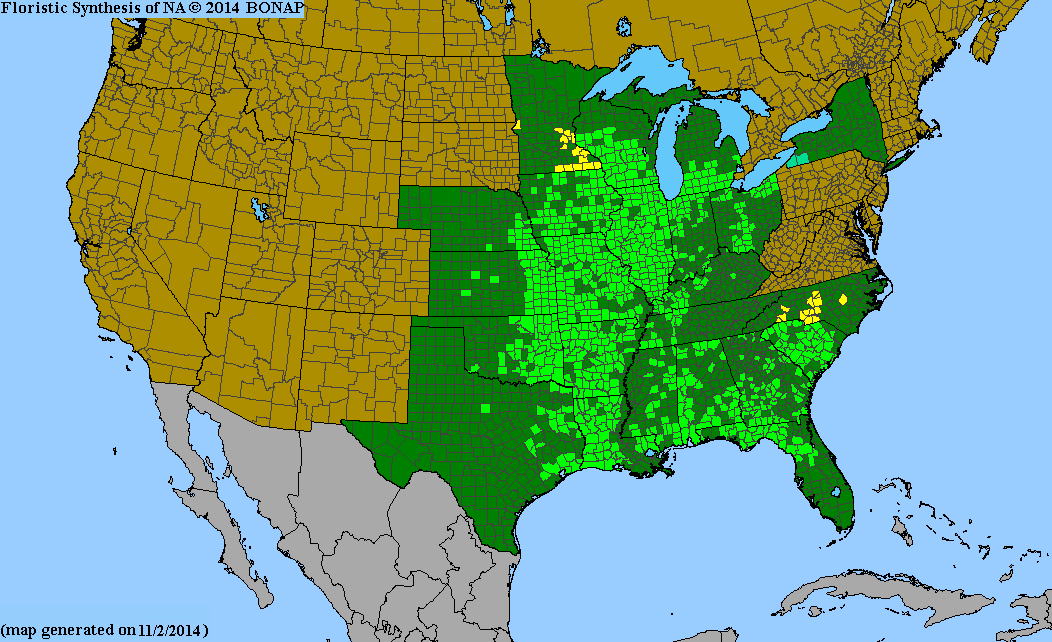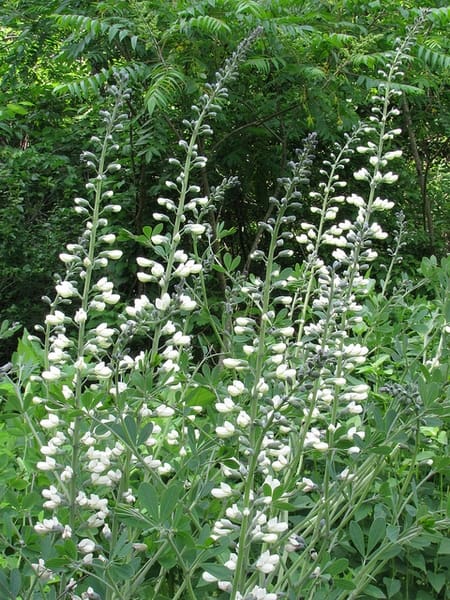Fabaceae
white wild indigo
Baptisia alba
Synonyms
Crotalaria alba
Podalyria alba
Sophora alba
Sophora glauca
Other Common Names
false indigo
Plant Type
Herbaceous Wildflower
Life Cycle
Perennial
Typical Size
2-4 ft. tall
2 ft. wide
Tolerant of
Drought
Inolerant of
Poorly Drained Soil
Propagation
By seed, By cutting, By division
Plant Propagation Notes
Collect seed approximately six weeks after flowering when pods are black and started to open. Seed requires cold stratification, so plant outside in fall or artificially stratify (at least 10 days) and plant in spring. Divide root stock in the fall. This species is deeply rooted.
Plant Planting Notes
12″ spacing
Plants/Diseases
This plant is tolerant and resistant to many things as well as does not have a major disease or insect problems.
Wildlife Benefits
Nectar/pollen source for pollinating insects, Host plant for butterfly larvae
Leaves
Leaves are compound, trifoliate, approximately 1-3 inches. Alternate. Leaf margins entire.
Flowers
The white, pea-like flowers are arranged on a raceme. Each flower is less than 1 inch.
Fruit
As a legume, the black seeds are held within pods that are 1-3 inches long.
Bark
Spreading, slender branches with a blue/gray (glaucous) hue.
Toxicity
This plant cause low toxicity and is poisonous through ingestion. All parts are poisonous. Symptoms include nausea, vomiting, and diarrhea.

USDA Hardiness Zones
5, 6, 7, 8
Light Exposure
Full Sun, Part Sun/Shade
Soil Moisture
Moist
Soil Drainage
Well-drained
Soil pH
Acidic (less than 6.0)
Native in South Carolina?
Yes
Plant Native Habitat
Forest or natural areas in woodland borders and open woods
Global Conservation Status (NatureServe)
Secure (G5)
Federal Conservation Status (USFWS)
Not Listed
Distribution Notes
Uncommon in the SC Coastal Plain and Piedmont, and absent from the Mountains
Subspecies
Baptisia alba var. alba

